Prednisone for 5 days. Exploring the Short-Term Side Effects of Prednisone: A Comprehensive Overview
What are the potential short-term side effects of taking prednisone? Discover the answers to this and other questions about the impacts of short-term prednisone use.
The Essentials of Prednisone
Prednisone is an oral corticosteroid medication that acts by reducing the activity of the immune system. It is used to treat a wide range of conditions, including asthma exacerbation, allergic reactions, autoimmune diseases such as lupus and rheumatoid arthritis, adrenal gland problems, intestinal issues like ulcerative colitis and inflammatory bowel disease, multiple sclerosis, and various inflammatory conditions affecting the skin, eyes, lungs, and kidneys. Prednisone is also used to treat certain cancers, such as leukemia, and to prevent the rejection of transplanted organs.
Short-Term Prednisone Side Effects
While prednisone is an essential medication for treating many health disorders, it can also lead to a range of short-term side effects, even with a short course of treatment. These side effects can occur after just one dose of prednisone if the dose is high enough, typically more than 40 mg per day. In rare cases, people may develop serious allergic reactions when starting prednisone treatment, with symptoms including skin rash, hives, itching, swelling of the face, lips, mouth, or throat, and difficulty breathing.

Side Effects of a 5-Day Prednisone Course
A 5-day course of prednisone can also cause short-term side effects, including changes in mood, appetite, sleep, and energy levels. The severity of these side effects depends on the dose of prednisone, with lower doses being less likely to cause adverse effects than higher doses.
Common Short-Term Side Effects of Prednisone
- Fluid retention causing swelling in the face, hands, ankles, and feet
- Increased appetite
- Insomnia (trouble sleeping)
- Jittery or restlessness
- Stomach pain and indigestion
- Mood changes
- Increased blood sugar
- Increased sweating and hot flashes
Less Common Short-Term Side Effects
- Behavioral changes like agitation, aggression, irritability, and psychotic symptoms
- Blurred vision
- Urinary difficulties
- Headache
- Fast, pounding, or irregular heartbeat
- Ringing in the ears
- Trouble breathing
- Confusion
- Delirium
- Problems with thinking or speaking
Long-Term Side Effects of Prednisone
While the focus of this article is on short-term side effects, it’s important to note that some side effects can develop after the long-term daily use of prednisone. Again, higher doses are more likely to cause serious side effects than low-dose prednisone. Some of the long-term side effects reported by many patients who took prednisone for a long time include:
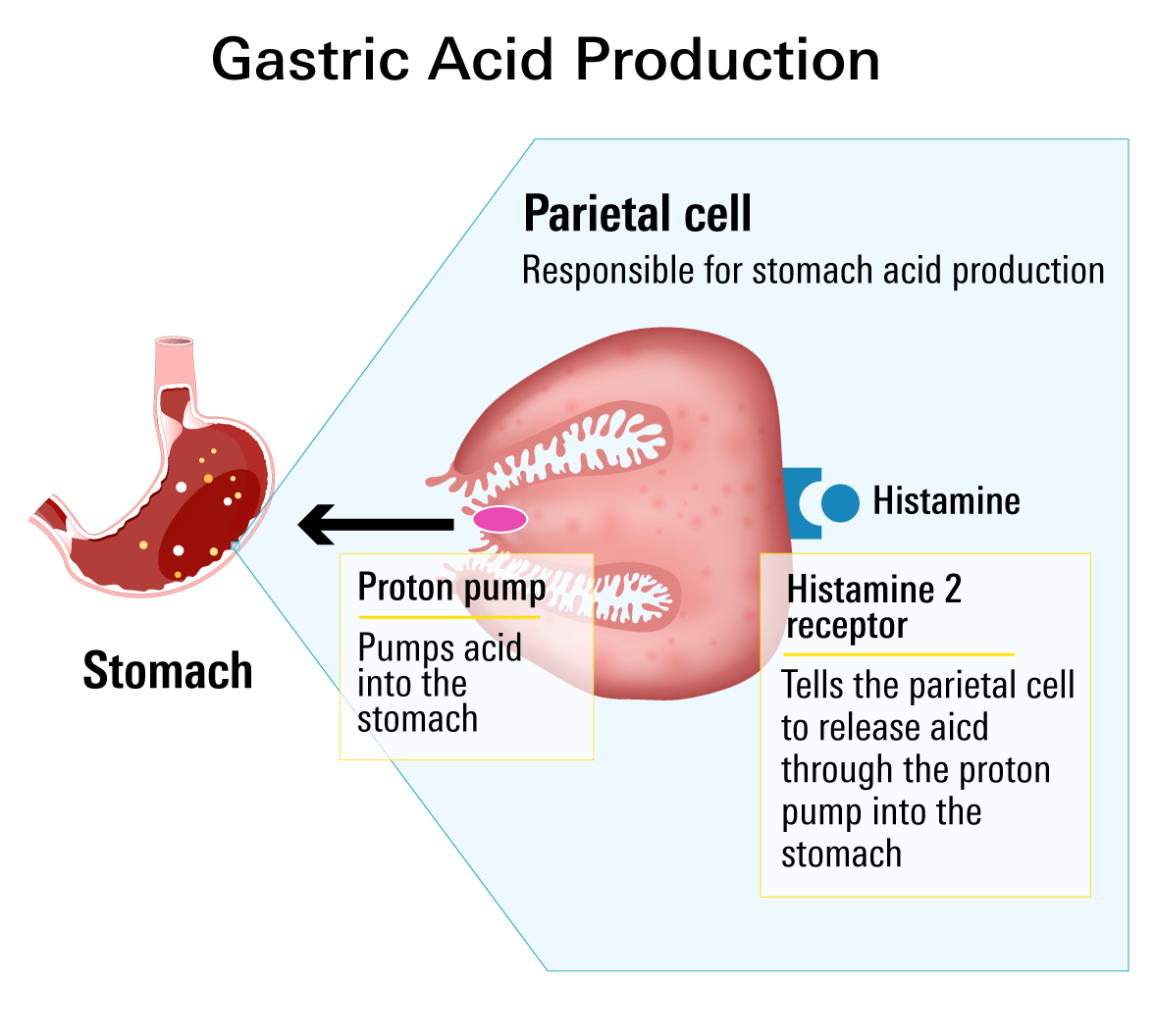
- Weight gain
- Osteoporosis: Bone loss (decreased bone density and increased risk of bone fractures)
- Skin bruising
- Thinning of skin and hair
- Moon face: the face can swell and get rounder
- Muscle weakness
- High blood sugar
- Delayed or impaired wound healing
- Increased risk of bacterial, viral, and fungal infections
- Eye problems such as cataracts or glaucoma (increased eye pressure)
- Venous thromboembolism: Blood clots – there are findings that high doses of prednisone can lead to blood clots. However, various confounding factors could account for blood clot formation. Therefore, the risks for VTE are evaluated on a case-by-case basis.
- Decreased growth in children
- Psychotic symptoms
Balancing the Risks and Benefits of Prednisone
It’s important to talk to your doctor about the potential side effects of prednisone, both short-term and long-term. Your doctor can help you understand the risks versus the benefits of prednisone treatment and recommend alternative treatment options if necessary. By being informed about the potential side effects, you can work with your healthcare provider to make the best decision for your health and well-being.

Conclusion
In conclusion, while prednisone is an essential medication for treating a wide range of health conditions, it can also lead to a variety of short-term and long-term side effects. It’s crucial to be aware of these potential side effects and work closely with your healthcare provider to manage your treatment and minimize any adverse impacts. By understanding the risks and benefits of prednisone, you can make informed decisions about your health and ensure that you receive the best possible care.
What Are Some Short-Term Prednisone Side Effects?
Written by
Juhi Modi
Medically reviewed by
HaVy Ngo-Hamilton, Pharm.D.
| Apr 19, 2023
Prednisone is an oral corticosteroid medication that acts by reducing the activity of the immune system. It is used to treat a wide range of conditions.
People can use prednisone short-term for asthma exacerbation or an allergic reaction, while chronic prednisone use is typical for people with autoimmune diseases such as lupus and rheumatoid arthritis (RA). Prednisone is also used for many other health conditions, such as adrenal gland problems, intestinal problems like ulcerative colitis and inflammatory bowel disease, multiple sclerosis, and inflammatory conditions of the skin, eyes, lungs, and kidneys. It is also used to treat nervous system conditions (e.g., multiple sclerosis) and certain cancers (e.g., leukemia, a blood cancer). It is also used along with anti-rejection drugs to prevent the rejection of transplanted organs. Prednisone is a prescription medicine available as a tablet, a delayed-release tablet, and an oral solution.
It is also used to treat nervous system conditions (e.g., multiple sclerosis) and certain cancers (e.g., leukemia, a blood cancer). It is also used along with anti-rejection drugs to prevent the rejection of transplanted organs. Prednisone is a prescription medicine available as a tablet, a delayed-release tablet, and an oral solution.
While there is no doubt about the essential role of prednisone in treating many health disorders, taking prednisone can also lead to a range of both short and long-term side effects, as well as an increased risk of serious health complications. Please continue reading to learn more about the side effects and risks of taking prednisone tablets.
Does a short course of prednisone cause side effects?
Yes, a short course of prednisone can cause side effects. In fact, certain side effects can occur after just one dose of prednisone if the dose is high enough, meaning more than 40 mg per day. In rare cases, like with any other medications, people can develop serious allergic reactions after starting prednisone treatment. Signs and symptoms of an allergic reaction include skin rash, hives, itching, swelling of the face, lips, mouth, or throat, and difficulty breathing.
Signs and symptoms of an allergic reaction include skin rash, hives, itching, swelling of the face, lips, mouth, or throat, and difficulty breathing.
Will a 5-day course of prednisone cause side effects?
A 5-day course of prednisone can cause short-term side effects, including changes in mood, appetite, sleep, and energy. The severity of the side effects depends on the dose of prednisone. Low doses are less likely to cause adverse effects than high doses of prednisone.
Some of the common short-term side effects of prednisone include:
- Fluid retention causing swelling in the face, hands, ankles, and feet
- Increased appetite
- Insomnia (trouble sleeping)
- Jittery or restlessness
- Stomach pain and indigestion
- Mood changes
- Increased blood sugar
- Increased sweating and hot flash
Other side effects that are less common include:
- Behavioral changes like agitation, aggression, irritability, and psychotic symptoms
- Blurred vision
- Urinary difficulties
- Headache
- Fast, pounding, or irregular heartbeat
- Ringing in the ears
- Trouble breathing
- Confusion
- Delirium
- Problems with thinking or speaking
What are the long-term side effects of prednisone?
Some side effects develop after the long-term daily use of prednisone. Again, higher doses are more likely to cause serious side effects than low-dose prednisone. Some of the long-term side effects reported by many patients who took prednisone for a long time include:
Again, higher doses are more likely to cause serious side effects than low-dose prednisone. Some of the long-term side effects reported by many patients who took prednisone for a long time include:
- Weight gain
- Osteoporosis: Bone loss (decreased bone density and increased risk of bone fractures)
- Skin bruising
- Thinning of skin and hair
- Moon face: the face can swell and get rounder
- Muscle weakness
- High blood sugar
- Delayed or impaired wound healing
- Increased risk of bacterial, viral, and fungal infections
- Eye problems such as cataracts or glaucoma (increased eye pressure)
- Venous thromboembolism: Blood clots – there are findings that high doses of prednisone can lead to blood clots. However, various confounding factors could account for blood clot formation. Therefore, the risks for VTE are evaluated on a case-by-case basis.
- Decreased growth in children
- Psychotic symptoms
Talk to your doctor about what to look out for and different tips if you are concerned about the long-term side effects of prednisone.
What are the side effects of a short course of steroids?
Besides the side effects mentioned above, a short course of steroids can cause other less common side effects, especially if you are on a high dose. Your doctor or pharmacist can help you understand the risks versus benefits of prednisone treatment and recommend other treatment options for your medical conditions.
What are the dangers of short-term prednisone?
Short-term treatment with prednisone usually does not cause serious complications. However, long-term treatment can lead to potential risks of serious health complications.
Long-term side effects of prednisone
Effects on the heart and kidneys
Prednisone can affect how the kidneys work and lead to high blood pressure or elevated blood pressure, which can affect your heart. Tell your healthcare professional if you have a history of heart disease or kidney problems before starting prednisone.
Stomach ulcers
Prednisone can damage the lining of the stomach and cause stomach irritation and ulcers. Avoid drinking alcohol or taking nonsteroidal anti-inflammatory drugs (NSAIDs) like ibuprofen while on prednisone, as they can worsen these side effects. Call your doctor immediately if you develop stomach pain or bloody or tarry stools. Your doctor may prescribe other medications to protect your stomach if you need to take prednisone for a long time.
Bone loss
Taking prednisone long-term can lead to low bone density and an increased risk of bone fractures. This medication can also slow a child’s growth. Alcohol and smoking can further increase the risk of bone loss. Talk to your healthcare professional about these risks, especially if you are taking high doses or taking prednisone for a long time.
Drug interactions
Taking prednisone with certain other drugs can lead to serious side effects. Before starting prednisone, give your doctor or pharmacist a complete list of your medications, including prescription drugs, over-the-counter medications, dietary supplements, and herbal products.
Adrenal gland function
The adrenal gland produces a hormone called cortisol; prednisone and other corticosteroids mimic the effects of cortisol to reduce inflammation. Taking a synthetic steroid medicine like prednisone for a long time can lead to adrenal suppression, where the adrenal glands stop making natural hormones. Lowering the dose of prednisone suddenly or stopping the medicine can lead to dangerous health complications because the body now depends on external steroids. Your healthcare provider will tell you how to slowly decrease the prednisone dose to avoid withdrawal symptoms. Tell your doctor if you develop fever, fatigue, joint pain, or muscle pain while coming off prednisone after taking it for a few weeks.
Increased risk of infections
Prednisone suppresses the immune system. Taking this medicine for a long time can increase your risk of serious infections. Prednisone can also mask the symptoms of infections. Avoid contact with people who are sick with contagious diseases. Do not take live vaccines while on prednisone without talking to your doctor. Seek prompt medical attention for signs and symptoms of infections, such as fever, chills, fatigue, and sore throat.
Do not take live vaccines while on prednisone without talking to your doctor. Seek prompt medical attention for signs and symptoms of infections, such as fever, chills, fatigue, and sore throat.
Eye problems
Long-term prednisone side effects include a higher risk of cataracts and glaucoma. The risk is higher with steroid eye drops, but if you take long-term high-dose prednisone, you still can develop eye problems. You should not take prednisone if you have herpes simplex viral infection of the eye.
Tell your doctor if you develop eye pain, blurred vision, or vision changes. Keep all your appointments with your eye doctor during prednisone treatment.
Mood and behavior changes
Prednisone and other corticosteroid medications can cause mood and behavior changes. Tell your doctor if you develop depression, mood swings, trouble sleeping, confusion, delirium, or hallucinations while on prednisone.
Risk to an unborn baby
Clinical trials have shown that prednisone can be harmful to an unborn baby. These effects occur especially during the first trimester. Before starting prednisone, tell your doctor if you are pregnant, could be pregnant, are planning on pregnancy, or are breastfeeding.
These effects occur especially during the first trimester. Before starting prednisone, tell your doctor if you are pregnant, could be pregnant, are planning on pregnancy, or are breastfeeding.
References:
- https://medlineplus.gov/druginfo/meds/a601102.html
- https://www.mayoclinic.org/steroids/art-20045692
Prednisone Dosage: What’s Normal Prednisone Dose?
Prednisone, the most common anti-inflammatory steroid in the United States, can be prescribed at varying levels of prednisone dosage based on your condition and your response to the medication. Read on to discover what is the normal dosage of prednisone for certain conditions, plus find out how to take different prednisone dosages.
Prednisone Tablet Dosage Strengths
Manufacturers make prednisone in the following dosage strengths.
- Prednisone 1 mg tablet
- Prednisone 2.5 mg tablet
- Prednisone 5 mg tablet
- Prednisone 10 mg tablet
- Prednisone 20 mg tablet
- Prednisone 50 mg tablet
Manufacturers created many prednisone dosage options to enable very high prednisone doses (over 50 mg) and very small prednisone doses (less than 5 mg). Prednisone tapers require dosage reductions of small amounts which may require the use of 1 mg tablets.
Prednisone tapers require dosage reductions of small amounts which may require the use of 1 mg tablets.
Watch my Video About Prednisone Dosages
Find out some typical prednisone dosages in this video.
Normal Dose of Prednisone?
As the Prednisone Pharmacist, I often get asked, “Is my prednisone dosage normal?” It’s a hard question to answer because the truth is, there is no such thing as a normal prednisone dosage. You need to consider the following questions:
- What are you using it for?
- How bad is your condition?
Understanding Prednisone Dosage
Prednisone can be used for many reasons. And that affects what is the normal prednisone dosage that can be expected for your situation. Doctors from any specialty can prescribe prednisone to help with inflammation. The dose of prednisone the doctor prescribes depends on which diagnosis and how bad of a situation.
What is a Normal Prednisone Dosage?
Dosages around 10 mg to 20mg are a normal, average dose of prednisone. A typical starting dose of prednisone can range between 5 mg to 60 mg of prednisone. The dose of prednisone should be individualized for each patient.
But when it comes to prednisone dosage, there is no one-size-fits-all way of answering this question. Your dosage really depends on how severe your condition is. At the end of this article you can find typical doses of prednisone for common conditions prednisone is used for.
The Prednisone Dosage Principle
The adage, “Use the lowest effective dose for the shortest period of time,” guides prednisone dosages. While this is true for all drugs, it is especially true for prednisone because of the high risks of side effects. Only take prednisone if the benefits outweigh the risks.
Use the lowest effective dose for the shortest period of time.

Generally, doses around 20 mg of prednisone are a standard starting dose for most situations, although those with more serious conditions may require higher dosages. Ideally, doctors look to prescribe the lowest effective dose for the shortest period of time in order to minimize any associated risks.
Prednisone Dosage Situations from High to Low Dose and Short to Long-Term
The worst, most acute or life-threatening situations receive the highest dosage for a short time. For example, when a person with multiple sclerosis (MS) suddenly loses vision, the neurologist doctor usually prescribes an extremely high dose of steroids of around 1000 mg prednisone equivalent a day for only a few days. That high of a dose is justified for preventing permanent blindness. Giving a super high dose for only a few days is called a steroid burst dose and is given as an intravenous bolus. But doctors rarely prescribe that high of a dose for more than a few days at a time because of the high risks of side effects.
Usually, the vision will return to normal and the person with multiple sclerosis will stop taking prednisone. The MS flare dies down and the emergency is over.
The opposite side of the spectrum is using a low dose for a long time. For example, people with rheumatoid arthritis (RA) often use prednisone 5-10 mg per day for years. The RA causes so much pain and disability to justify continued use over a long time. A low dosage of prednisone is between 5-10 mg per day.
Some conditions only need prednisone for a little while. The doctor might find a lung infection and prescribe something like 40mg for a day, then 30mg for a day, then to 20mg for a day, then 10 mg for a day, and finally 5 mg on the fifth day, until off of prednisone on day 6 (see the dosage taper schedule below). This is a typical short-term prednisone dosage prescription you might get from the emergency room. A short course of prednisone dosage usually lasts less than 14 days and usually less than a week.
Another situation is if the doctor prescribes prednisone long-term but not permanent. You might get 40mg for a week, then 30mg for a week, then down to 20mg for a week, and 10 mg for a week, and then 5 mg for the last week and then stop after that 5th week. The starting dosage can range between 5 to 60 mg per day of prednisone. The tapering, or lowering of prednisone dosage, continues until you are finally off. Long term prednisone is generally considered longer than 21 days of prednisone treatment.
You might get 40mg for a week, then 30mg for a week, then down to 20mg for a week, and 10 mg for a week, and then 5 mg for the last week and then stop after that 5th week. The starting dosage can range between 5 to 60 mg per day of prednisone. The tapering, or lowering of prednisone dosage, continues until you are finally off. Long term prednisone is generally considered longer than 21 days of prednisone treatment.
Importance of Prednisone Taper
Furthermore, many people undergo a prednisone taper which involves reducing the dosage each day until the drug has been completely stopped—this could mean dropping from 40mg to 30mg and then all the way down to 0 mg in five days or less depending on individual circumstances.
Sample of Prednisone Taper Chart by Dr. Megan. Download the printable chart for free!
Five (5) Day Prednisone Dosage 40 mg Taper
For emergency situations like breathing problems, rashes, or various types of pain, doctors often prescribe a short-term prednisone dosage taper. This 5-day prednisone dosage often starts at prednisone 40 mg. The Prednisone Instructions generally follow this typical dosage taper:
This 5-day prednisone dosage often starts at prednisone 40 mg. The Prednisone Instructions generally follow this typical dosage taper:
- Day 1 – Prednisone 40 mg (for example, two 20 mg tablets)
- Day 2 – Prednisone 30 mg (#1.5 20 mg tablets)
- Day 3 – Prednisone 20 mg (#1 20 mg tablet)
- Day 4 – Prednisone 10 mg (half of a 20 mg tablet)
- Day 5 – Prednisone 5 mg (1/4 of a 20 mg tablet)
- Day 6 – Stop (Prednisone 0 mg)
This 5 day prednisone dosage taper listed above is typical but could be changed in many ways. Perhaps your doctor prescribes each dose for a week instead of a day. Or your doctor could use prednisone 10 mg tablets instead of 20 mg tablets. Your doctor could prescribe 40 mg every day for five days and then stop. Or the doctor could start at 20 mg and drop by 5 mg each day. All of these and many more are typical and normal prednisone dosages.
Read more about How to Taper Prednisone where you can also download a Free Prednisone Taper Chart.
How to Take Prednisone 20 mg Dosage for 5 Days
If your doctor prescribed prednisone 20 mg for 5 days, then you should take each tablet first thing in the morning with food once a day. The prednisone 20 mg dosage instructions are typically like this:
- Day 1 – Prednisone 20 mg tablet (take #1 tablet)
- Day 2 – Prednisone 20 mg tablet (take #1 tablet)
- Day 3 – Prednisone 20 mg tablet (take #1 tablet)
- Day 4 – Prednisone 20 mg tablet (take #1 tablet)
- Day 5 – Prednisone 20 mg tablet (take #1 tablet)
- Day 6 – Stop (don’t take any more prednisone)
However, your doctor can prescribe many variations of the 5-day prednisone dosage of 20 mg, such as described in the section above starting with 40 mg. Or the doctor could start with 20 mg for two days and by Day 3 it could be 10 mg for two days, and then for the last day just 5 mg.
You might be wondering: “Is 20 mg of prednisone a low dose?” No, prednisone 20 mg and above is a high dose. Especially compared to our body’s natural cortisol equivalent of only 2.5 mg secreted per day, 20 mg of prednisone is 8 times more than naturally occurring in our bodies.
Especially compared to our body’s natural cortisol equivalent of only 2.5 mg secreted per day, 20 mg of prednisone is 8 times more than naturally occurring in our bodies.
How to Take Prednisone 20 mg 3 tablets Daily (Prednisone 60 mg)
Your doctor may prescribe a total of 3 tablets per day of prednisone 20 mg, which is 60 mg of prednisone. If so, generally the entire dose, or all 3 tablets of prednisone 20 mg, are swallowed all at once, first thing in the morning.
How to take Prednisone 40 mg for 5 days
Doctors may prescribe 40mg of prednisone for 5 days for certain inflammatory, acute conditions. Since a 40 mg prednisone tablet is not commercially available in the United States, the doctor usually prescribes prednisone 20 mg tablets and instructs you to take 2 tablets by mouth. This prescription is for prednisone 20 mg #2 tablets daily. Unless instructed otherwise, the instructions for prednisone is to take both tablets–the entire daily dose of prednisone 40 mg–all at once in one swallow first thing in the morning.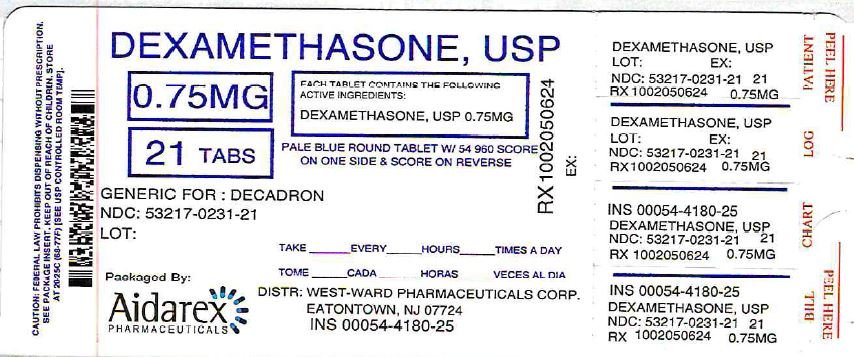
5 Day Prednisone Dosage 40 mg
- Day 1 – Prednisone 20 mg tablet (take #2 tablets)
- Day 2 – Prednisone 20 mg tablet (take #2 tablets)
- Day 3 – Prednisone 20 mg tablet (take #2 tablets)
- Day 4 – Prednisone 20 mg tablet (take #2 tablets)
- Day 5 – Prednisone 20 mg tablet (take #2 tablets)
- Day 6 – Stop (don’t take any more prednisone)
Sometimes the doctor may prescribe 40 mg of prednisone for 7 days instead of just 5. In that case, continue the dosage chart above for two more days. Again, doctors can prescribe any variation of any of these prednisone dosage charts, so don’t be surprised if it doesn’t fit these exact schedules. Follow what your doctor prescribes and ask your pharmacist any questions about your prescription.
You might be wondering: “Is 40 mg of prednisone a high dose?” Yes, anything over 20 mg is a high dose, so prednisone 40 mg is a high dose. Especially compared to our body’s natural cortisol equivalent of only 2.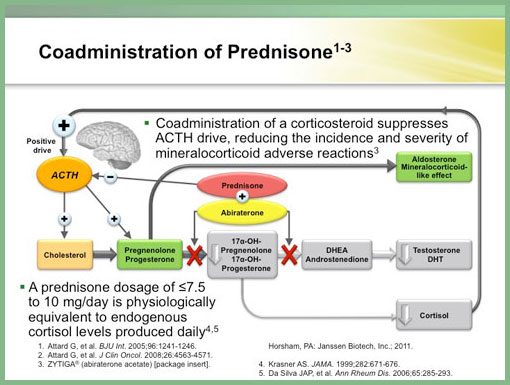 5 mg secreted per day, 40 mg of prednisone is 16 times more than naturally occurring in our bodies.
5 mg secreted per day, 40 mg of prednisone is 16 times more than naturally occurring in our bodies.
50 mg Prednisone for 5 Days
Prednisone can be prescribed at any dose and the 50 mg prednisone tablet dose is the least commonly prescribed. If your doctor prescribes prednisone 50 for 5 days, either the 50 mg tablet or an equivalent dose using other strengths may be used. Either Prednisone 10 mg (take #5 tablets per day for 5 days) or Prednisone 20 mg (take #2.5 tablets per day for 5 days) may be prescribed to reach 50 mg per day. You can split prednisone pills in half or in fourths if needed to reach the correct dose.
3 Day Dose of Prednisone
Doctors can prescribe prednisone for any length of time, from just one dose, to three days, to long-term. Typically a 3 day prednisone dosage will be either 40 mg every day for 3 days, or 20 mg every day for 3 days, or 10 mg every day for three days. Any variation is possible.
Do I Have to Taper Prednisone?
If you’re prescribed prednisone for less than 10 to 14 days, then it may be unnecessary to taper. You might be just fine to simply stop when the prescription finishes as your doctor directed. However, never stop taking prednisone suddenly (go “cold turkey”) without consulting with your doctor as it could be fatal.
You might be just fine to simply stop when the prescription finishes as your doctor directed. However, never stop taking prednisone suddenly (go “cold turkey”) without consulting with your doctor as it could be fatal.
Read more about the nuances of tapering prednisone.
What’s the Most Common or Normal Dosage of Prednisone?
According to ClinCalc online, the most common dosage strength of prednisone is prednisone 10 mg. They compared all prescriptions in the United States and showed that prednisone 10 mg is dispensed 30.6% of the time. Close in line at 2nd place, pharmacies dispense prednisone 20 mg 29.3% of the time. Next, and in a virtual three-way tie, the prednisone 5 mg strength is 27.9% of the time. A tiny minority of the time pharmacies dispense prednisone 1 mg, at only 6.2% of all prescriptions dispensed. Finally, “other” accounts for 6.0% of the time, which could include 2.5 mg tablets, 50 mg tablets, liquids, compounded powders, or otherwise a dosage not tracked in the prescription dispensing data.
Key = Dosage Form Strength: % of Dispensed Prednisone Products
- Prednisone 10 mg: 30.6%
- Prednisone 20 mg: 29.3%
- Prednisone 5 mg: 27.9%
- Prednisone 1 mg: 6.2%
Next they compared the number of days supplied per prescription of prednisone. ClinCalc showed in the following chart that the range is most often between 5 days of prednisone and a 90 days supply of prednisone.
Key = Color: # days supply: percent of prescriptions of prednisone.
- Royal blue: 5 days supply of prednisone: 22.1%
- Red: 30 days supply of prednisone: 21.8%
- Orange: 90 days supply of prednisone: 14.8%
- Green: 6 days supply of prednisone: 6.2%
- Purple: 12 days supply of prednisone: 5.6%
- Other/unspecified supply of prednisone: 29.5%
What is the difference between a Dosage Form compared to a Prednisone Dosage compared to a Prednisone Dose?
The Dose of a drug is “the specified amount of medication taken at one time. By contrast, the dosage is how to take the medication as prescribed: a specific amount, number, and frequency of doses over a specific period of time” (AMA Manual of Style).
By contrast, the dosage is how to take the medication as prescribed: a specific amount, number, and frequency of doses over a specific period of time” (AMA Manual of Style).
When it comes to the prednisone dose, that’s the exact amount of prednisone to take. Let’s say it’s the prednisone 10 mg dose.
Then to turn that prednisone 10 mg dose into a dosage, we’d describe it how your doctor wrote it on the prescription. For example, the prednisone dosage becomes, “Take 1 (prednisone 10 mg) tablet by mouth every morning for 5 days.”
Finally, a Dosage Form is the exact method of getting prednisone 10 mg into your body. Most commonly, prednisone is a tablet meant to be taken by mouth and swallowed to be absorbed by the gut and distributed into the body through the liver and blood. Prednisone could also be put into other dosage forms such as a capsule, a liquid to swallow, a liquid to inject, a cream to rub on, or even a suppository to place in the rectum.
Prednisone Dosage Forms
Innovators even created different dosage forms of prednisone tablets to improve how it works. Rayos is a delayed-release tablet meant to be taken at night (normally prednisone is taken in the morning) and then it doesn’t kick in (delayed release) until early in the morning for people with early-morning inflammatory conditions like rheumatoid arthritis. Orapred ODT is an orally disintegrating tablet that dissolves in the mouth without swallowing (however, Orapred’s active ingredient is actually prednisolone, not prednisone).
The only FDA-approved prednisone dosage forms are the oral immediate-release tablet, the oral delayed-release tablet Rayos, and an oral solution (Prednisone Intensol Oral Solution, 5 mg per 5 mL prednisone dosage). Other dosage forms (cream, suppository, lozenge, etc.) could be compounded by a specialized pharmacy for individual patients but are not commercially available at traditional pharmacies. The most common dosage form of prednisone is the oral immediate-release tablet due to its ease of dosing and low price (about $10 total drug cost per prednisone prescription in the USA in 2020).
Total Cost Per Day of Prednisone Therapy (USD/day)
The oral solution of prednisone costs much more and patients report that the prednisone solution tastes awful, so it isn’t commonly prescribed and pharmacies may not have it in stock. Rayos is more expensive because it is still a branded product designed for a special niche.
How does the Prednisone Dosage Compare to Other Oral Steroids?
In the United States, prednisone is the most common oral corticosteroid, reaching over 19 million prescriptions a year. The other oral steroids hydrocortisone, prednisolone, methylprednisolone, budesonide, and dexamethasone are less commonly prescribed and have different potencies. That means that the same number of milligrams of prednisone needed to treat a condition would require a different number of milligrams of the other steroids.
Anti-inflammatory Prednisone Dosage Equivalents of Glucocorticoids
Prednisone is a steroid, glucocorticoid, and corticosteroid related to our naturally occurring hormone cortisol. Other drugs also in these classes of drugs can possibly replace prednisone and your doctor may switch you to a prednisone alternative. In doing so, normally the prescription is for an equivalent dosage of prednisone based on the new glucocorticoid’s anti-inflammatory activity.
Other drugs also in these classes of drugs can possibly replace prednisone and your doctor may switch you to a prednisone alternative. In doing so, normally the prescription is for an equivalent dosage of prednisone based on the new glucocorticoid’s anti-inflammatory activity.
Prednisone 5 mg is approximately equivalent to the potencies of the following dosages of other glucocorticoids:
- Cortisone 25 mg
- Hydrocortisone 20 mg
- Prednisolone 5 mg
- Prednisone 5 mg
- Triamcinolone 4 mg
- Methylprednisolone 4 mg
- Betamethasone 0.6 mg
- Dexamethasone 0.75 mg
Injectable Corticosteroids
Prednisone is not available as an injectable or intravenous (IV) form and if you are hospitalized, you will likely receive a replacement steroid such as IV hydrocortisone (Solu-Cortef), IV methylprednisolone (Solu-Medrol), or IV or intramuscular dexamethasone.
Prednisone is also not available as a steroid cream. Steroid creams and injections are common, but these aren’t prednisone itself, and instead are other related corticosteroids.
How to Take Prednisone
What is the proper way of taking prednisone? What is the best way of taking prednisone to minimize side effects? While the instructions for prednisone can vary, this is generally how to take prednisone:
- Take prednisone first thing in the morning.
- The best way of taking prednisone is to take it with food if you have stomach upset or if you’re taking other medications like Ibuprofen, Naproxen, Meloxicam and NSAID.
- Take with a tall glass of water.
Can I take all 6 Prednisone Pills at once?
You might be wondering about how many prednisone can you take at once. How should you take the extra pills per day–do you spread them out or take them at once? Although some “Prednisone Dose Packs” may instruct you to spread out the doses throughout the day, generally that’s not recommended. Instead, it’s best to take all 6 prednisone pills at once the first day, and so on. Or if you’re prescribed 20 mg tablets to take #2 on the first day, take both at once as soon as you get the prescription from the pharmacy. You can take 60 mg of prednisone all at once as #3 tablets of prednisone 20 mg.
You can take 60 mg of prednisone all at once as #3 tablets of prednisone 20 mg.
Watch this video to find out more about How to Take Prednisone:
Get Help No Matter the Dosage
No matter which dosage of prednisone your doctor prescribes, I want to help you. I created the Prednisone Checklist to help you cope with prednisone side effects.
Balance Your Health By Changing The Things That Are In Your Control To Change
- Discover exactly how to have the good effects outweigh the side effects
- 25+ tips for how to get your life back while taking this horrible, miracle drug
- The top 15 side effects of prednisone and what YOU can do about it.
FREE PREDNISONE CHECKLIST
Your Best Email*
Enter Email
Confirm Email
Prednisone Dosage for Adults for Common Conditions Prednisone is Used For
Below outlines the prednisone dosages recommended by the drug database Micromedex for some of the most common conditions people take prednisone for. For other conditions not listed below, the prednisone dosage for adults is between 5 to 60 mg per day depending on the factors above.
For other conditions not listed below, the prednisone dosage for adults is between 5 to 60 mg per day depending on the factors above.
Asthma Exacerbation Prednisone Dosage
- For the treatment of moderate to severe asthma exacerbations, the recommended dose of prednisone is 40 to 80 mg per day orally in 1 or 2 divided doses until peak expiratory flow reaches 70% of predicted.
- For an outpatient steroid burst, the recommended dose is 40 to 60 mg of prednisone for a total of 5 to 10 days.
Chronic Obstructive Pulmonary Disease Exacerbation Prednisone Dosage
- Methylprednisolone 40 mg IV on day 1 then prednisone 40 mg by mouth on days 2 to 5.
Community Acquired Pneumonia Prednisone Dosage
- Prednisone 40-50 mg orally per day for 5-10 days.
Gout Acute Exacerbation Prednisone Dosage
- Prednisone dosage 0.5 mg/kg/day or more by mouth for 5-10 days and then discontinued.
- Prednisone dosage 0.
 5 mg/kg/day for 2-5 days followed by a 7-10 day taper and then discontinued.
5 mg/kg/day for 2-5 days followed by a 7-10 day taper and then discontinued.
Rheumatoid Arthritis Prednisone Dosage
- Bridging therapy: 10 mg per day or less by mouth added at initiation of disease-modifying antirheumatic drug (DMARD) therapy or biologic agent until the other drug is effective and then tapered to the lowest effective dose of prednisone.
- Disease flare: use at lowest possible dose for up to 3 months.
Ulcerative Colitis Prednisone Dosage
- Prednisone dosage 40 to 60 mg orally once daily with response expected within 5-7 days of initiation. Use as short as possible with early initiation of steroid-sparing therapy.
Other Typical Prednisone Dosages
The following prednisone dosages do not have a defined dose by a published clinical treatment guideline, but I included them here for your information. Your doctor may prescribe something different so follow your doctor’s prescription.
Polymyalgia Rheumatica Prednisone Dosage
- First diagnosis: between 15 to 25 mg of prednisone dosage per day and slowly tapered over a year or more.

Giant Cell Arteritis Prednisone Dosage
- Prednisone dosage for first diagnosis: between 40 mg to 60 mg with the goal to taper off long-term.
Idiopathic Thrombocytopenic Purpura/Immune ThrombocytoPenia (ITP: what I took prednisone for) Prednisone Dosage
- Generally the prednisone dosage for ITP starts at 1 mg/kg per day (range of 0.5 – 2 mg/kg/day) and is tapered down from there depending on response to platelets. I was prescribed 60 mg per day to start.
- Steroid Burst Dosing: an alternative that may work better than prednisone for ITP is to take dexamethasone 40 mg per day for 4 days total.
Bronchitis Prednisone Dosage
- 5 Day Prednisone Dosage for Bronchitis: the dose may be between 40 to 60 mg of prednisone for 5 days but this is controversial as studies have shown that prednisolone is not effective for bronchitis symptoms in people without asthma. Read more about prednisone for cough–herbals and alternative treatments may be more effective than prednisone for cough.

Get your Prednisone Checklist!
Sources:
- DiPiro JT, Talbert RL, Yee GC, et al, eds. Pharmacotherapy: A Pathophysiologic Approach. 7th ed. McGraw-Hill; 2008:1403. Link
- Samuel S, Nguyen T, Choi HA. Pharmacologic Characteristics of Corticosteroids. J Neurocrit Care 2017;10(2):53-59 https://doi.org/10.18700/jnc.170035
- Kane SP. Prednisone, ClinCalc DrugStats Database, Version 2022.08. ClinCalc: https://clincalc.com/Drug/Stats/Drugs/Prednisone. Updated August 24, 2022. Accessed May 18, 2023
- Pharmacia and Upjohn and Company. Deltasone (prednisone) tablet. 2007 [rev. 2007 Mar]. In: DailyMed [Internet]. [2005] – . [about 20 p.]. Bethesda (MD): National Library of Medicine (US). Available from: Link
- Prednisone. DRUGDEX®. [updated 2021 Apr 09] In: IBM Micromedex® [Internet]. Truven Health Analytics, Greenwood Village, Colorado. Available at: http://www.micromedexsolutions.com/
- Horizon Therapeutics plc P-RAY-00129-4 03/22.
 Rayos (Prednisone) Delayed-release Tablets. Available from: Rayosrx.com
Rayos (Prednisone) Delayed-release Tablets. Available from: Rayosrx.com
Recall campaign: defective Prednisolone Elf is withdrawn from hospitals | Articles
Three series of the broad-spectrum hormonal drug Prednisolone will be withdrawn from circulation , Roszdravnadzor reported. We are talking about the drug “Prednisolone Elf” of Indian production. According to Izvestia’s sources, the volume of products rejected due to “mechanical inclusions” amounted to more than 40 thousand packages, the drug managed to get to state medical organizations, in particular to the Moscow regional ambulance station. This is not the first time that this drug from this particular manufacturer has been rejected and withdrawn from circulation.
New inclusions
Roszdravnadzor is recalling a large batch of a broad-spectrum hormonal drug Prednisolone Elfa — violations were detected in three batches. As follows from the letter of Roszdravnadzor, which the service sent to its territorial bodies, regional authorities and medical organizations, the violations were not only formal: in addition to a flaw in the description of the drug, there were complaints about its quality.
So, “mechanical inclusions” were identified in it, it is noted in document (available to Izvestia). The rejected batch is a solution for intravenous and intramuscular administration in ampoules manufactured by Indus Pharma Pvt. Ltd (India). It is supplied by the pharmaceutical company SPC Elfa from Balashikha.
Solutions for injection are subject to increased requirements – in particular, they must be sterile and free from mechanical impurities.
Photo: Izvestia/Andrey Ershtrem
Prednisolone is a hormone that has a wide spectrum of action: anti-inflammatory, decongestant, anti-allergic, immunosuppressive (reduces the increased activity of the immune system), anti-shock, the general practitioner of the Doctor Nearby company explained to Izvestia » Ekaterina Serebrennikova.
— It is widely used — for allergies, bronchial asthma, acute allergic reactions, skin diseases accompanied by increased allergic mood (psoriasis, eczema, atopic dermatitis), when you need to reduce the raging immune system in autoimmune diseases (systemic lupus erythematosus, various arthritis, rheumatism), to reduce inflammation , she said.
It is difficult to judge the danger of this particular batch, but the detection of any inclusions in the solution is necessarily considered a defect , said Viktor Dmitriev, general director of the Association of Russian Pharmaceutical Manufacturers.
– Mechanical inclusions are of a different nature. This may be precipitation, and a change in the color of the drug, and the presence of foreign elements in it – for example, glass fragments. Therefore, the drug will be withdrawn in any case, he said.
The degree of danger, according to him, depends on the violation itself. For example, a change in the color of the liquid in the ampoule can occur due to improper transportation, storage, expiration date, or maybe due to the fact that the manufacturer changed the cork on the package, but it turned out to be of poor quality and stained the drug.
Photo: IZVESTIA/Dmitry Korotaev
Another recall
According to a source close to the regulation of the pharmaceutical market, was registered in the labeling system 41,000 packages of recalled batches of the drug. Izvestia sent a request to SPC Elfa with a request to confirm the volume of recalled drugs and to inform where the drugs were delivered.
Izvestia sent a request to SPC Elfa with a request to confirm the volume of recalled drugs and to inform where the drugs were delivered.
According to Izvestia, a batch of the drug arrived, in particular, at the Moscow Regional Ambulance Station. Our source told us that the recall process has already begun, it is about a two-week supply of the drug.
The station and the Ministry of Health of the Moscow Region did not respond to Izvestia’s requests at the time of submission of the material.
This is not the first problem with the drug from this manufacturer. In December 2022, SPC Elfa itself decided to recall the products of Indus Pharma Pvt. Ltd. , Roszdravnadzor announced this in a letter. It was about Prednisolone Elf, and the violations reported by the supplier were the same – in the description and the presence of mechanical inclusions.
This time, the distributor himself turned to the Moscow laboratory of Roszdravnadzor with a request to check three batches of the drug, Roszdravnadzor told Izvestia.
— Once a nonconformity has been identified, the law requires the entire volume of the product to be recalled. This is a standard course of action with any drug for which violations are detected, a representative of the department said.
Photo: RIA Novosti / Pavel Lvov
All market participants automatically received information in the personal accounts of the labeling system about the ban on the sale of these drugs, was reported to Izvestia in the national system “Honest Sign” (tracks the circulation of medicines using mandatory QR codes on the packaging). If you try to sell them retail, the violation will be recorded, and the information will be transferred to Roszdravnadzor.
Withdrawal of these batches from the point of view of the availability of Prednisolone for patients will not play a critical role, Ekaterina Serebrennikova believes.
— There is a replacement for the drug. There are other corticosteroid drugs available on the market, including those of a biological nature, that can reduce inflammation in systemic diseases, she said.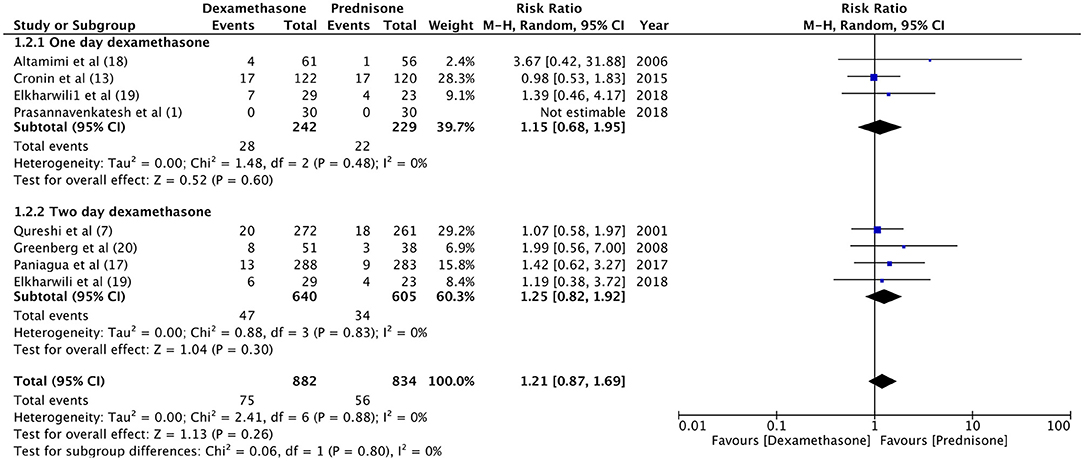
Nikolai Bespalov, development director from RNC Pharma, agrees with her, who called the detected volume of defective drug insignificant.
Prednisolone tab. 5mg №100 – PHARMACY Folk
International non-proprietary name. Prednisolone
Dosage form. Tablets.
Pharmacotherapeutic group. Corticosteroids for systemic use. Glucocorticosteroids. Prednisolone. ATX code H02AB06
Pharmacokinetics.
The bioavailability of prednisolone after oral administration is 70 – 90%. Food slows down the absorption of prednisolone in the initial phase, but does not affect the overall bioavailability of the drug. The maximum concentration in plasma is observed within 1-2 hours.
Prednisolone binds to plasma proteins, mainly to globulins, to a lesser extent to albumins. Compounds of glucocorticosteroids with globulins are characterized by great similarity, but a small amount of bonds, compounds with albumins – on the contrary. The volume of distribution of the free fraction of prednisolone is approximately 1.5 l/kg.
The volume of distribution of the free fraction of prednisolone is approximately 1.5 l/kg.
Prednisolone is metabolized mainly in the liver, to a lesser extent in the kidneys. Penetrates through the placental barrier. Less than 1% of a dose of prednisolone is excreted in breast milk.
The half-life of prednisolone in plasma is 2.1 – 3.5 hours, in tissues 18 – 36 hours. It is excreted in the urine as inactive metabolites, as well as in a small amount unchanged. The duration of action is from 1.25 to 1.5 days.
Pharmacodynamics.
Prednisolone is a synthetic glucocorticosteroid with a pronounced anti-inflammatory, anti-allergic, immunosuppressive effect. Prednisolone 5 mg is considered to have an anti-inflammatory effect equivalent to methylprednisolone 4 mg or dexamethasone 0.75 mg, betamethasone 0.6 mg, and hydrocortisone 20 mg. Its mineralocorticoid action is approximately 60% of the activity of hydrocortisone. Prednisolone delays the development of the inflammatory process without affecting its causes. It inhibits the accumulation of macrophages, leukocytes and other cells in the focus of inflammation. It inhibits phagocytosis, the release of lysosomal enzymes, as well as the synthesis and release of inflammatory mediators. Reduces expansion and permeability of capillaries, adhesion of leukocytes to capillary endothelium. Inhibits the migration of leukocytes.
It inhibits the accumulation of macrophages, leukocytes and other cells in the focus of inflammation. It inhibits phagocytosis, the release of lysosomal enzymes, as well as the synthesis and release of inflammatory mediators. Reduces expansion and permeability of capillaries, adhesion of leukocytes to capillary endothelium. Inhibits the migration of leukocytes.
By accelerating the synthesis of lipomodulin, it inhibits phospholipase A2, which leads to the suppression of the synthesis of prostaglandins and leukotrienes.
Indications for use.
Diseases that require systemic treatment with glucocorticoids:
- primary and secondary adrenal insufficiency, including Addison’s disease, adrenogenital syndrome
- thyroiditis (non-purulent)
- severe allergic diseases refractory to other treatments: serum sickness, hypersensitivity reactions to drugs, year-round or seasonal allergic rhinitis, angioedema
- Rheumatism, rheumatoid arthritis, rheumatic myocarditis, dermatomyositis, systemic lupus erythematosus, granulomatous giant cell mesoarteritis, periarteritis nodosa, relapsing polychondritis, ankylosing spondylitis, psoriatic arthritis
- Vasculitis, severe seborrheic dermatitis, severe erythema multiforme (Stevens-Johnson syndrome), atopic, contact and exfoliative dermatitis, pemphigus, ulcerative colitis, Crohn’s disease
- autoimmune hemolytic anemia, congenital aplastic anemia, secondary thrombocytopenia in adults, idiopathic thrombocytopenic purpura (Werlhof’s disease) in adults, acute or chronic lymphoblastic leukemia, lymphogranulomatosis
- nephrotic syndrome
- multiple sclerosis in the acute phase
- Loeffler’s syndrome, refractory to treatment by other means, aspiration pneumonia, symptomatic sarcoidosis, bronchial asthma, berylliosis
- iritis, optic neuritis, iridocyclitis, uveitis, retinitis, choroiditis, sympathetic retinal inflammation, scleritis, keratitis (not associated with herpes infection or fungal infection)
Dosage and administration.
The dose is determined individually, depending on the type of disease and response to treatment. Periodically it is necessary to evaluate the dose, since the severity of the underlying disease may change, or complications may develop during therapy. After achieving the desired result, the dose should be gradually reduced to the minimum effective.
If long-term therapy with prednisolone (usually more than 3 weeks) must be discontinued, withdrawal should be gradual and incremental to avoid a “withdrawal syndrome”. Abrupt discontinuation of therapy may be fatal. The dose should be reduced over weeks or even months, depending on the size of the dose, the duration of therapy, the underlying disease of the patient and the patient’s individual response to treatment. It is unlikely that abrupt withdrawal of prednisolone treatment for less than 3 weeks will result in clinically significant suppression of the hypothalamic-pituitary-adrenal system in most patients, but it should be borne in mind that the response to corticosteroids and tolerability of their withdrawal can vary widely. Thus, it is necessary to consider the issue of gradual dose reduction when discontinuing drugs after short courses or when taking higher doses and in patients with other risk factors for developing adrenocortical insufficiency.
Thus, it is necessary to consider the issue of gradual dose reduction when discontinuing drugs after short courses or when taking higher doses and in patients with other risk factors for developing adrenocortical insufficiency.
Dosing regimen with a gradual decrease in dose should be selected individually. Most patients tolerate dose reductions of prednisolone by 2.5 mg every 3-7 days until a dose of 5-10 mg/day is reached. Higher doses should be reduced gradually over 9-12 months.
How to use: is taken orally with a small amount of liquid after meals.
Adults: usually 5 mg to 60 mg per day, depending on the disease being treated. It is recommended to take prednisolone in accordance with the daily rhythm, in the morning a large dose (or all) is prescribed.
Doses for children: no experience in children. It is believed that children are particularly at risk for growth retardation, therefore, the indication for the use of the drug requires a particularly strict assessment of the condition of children.
Contraindications:
- hypersensitivity to the active substance or excipients of the drug
- current or recent parasitic and infectious diseases of a viral, fungal or bacterial nature: herpes simplex, herpes ophthalmic, herpes zoster (viremic phase), chicken pox, measles, amoebiasis, strongyloidiasis (established or suspected), systemic mycosis, active and latent tuberculosis
- pregnancy
- vaccination with live viral or bacterial vaccines
- severe myopathy (excluding myasthenia gravis)
- psychiatric history
- chronic active hepatitis (Hbs Ag positive)
- glaucoma
- lymphadenitis after BCG vaccination
- – pre- and post-vaccination period (8 weeks before and 2 weeks after vaccination)
- HIV immunodeficiencies
- patients with rare hereditary forms of galactose intolerance, lactase deficiency or glucose-galactose malabsorption syndrome
- diseases of the gastrointestinal tract: peptic ulcer of the stomach and duodenum, esophagitis, gastritis, acute or latent peptic ulcer, recently created intestinal anastomosis, ulcerative colitis with the threat of perforation or abscess formation, diverticulitis
- diseases of the cardiovascular system: recent myocardial infarction, decompensated chronic heart failure, arterial hypertension, tendency to thromboembolic disease
- diseases of the endocrine system: diabetes mellitus and impaired carbohydrate tolerance, thyrotoxicosis, hypothyroidism, Itsenko-Cushing’s disease
- severe chronic renal and/or liver failure, nephrourolithiasis
- hypoalbuminemia
- systemic osteoporosis
- myasthenia gravis
- acute psychosis
- obesity (III – IV stage)
- poliomyelitis (excluding bulbar encephalitis)
Pregnancy and lactation. Corticosteroid use in pregnant animals may cause fetal abnormalities, including cleft palate, intrauterine growth retardation, and affect brain growth and fetal development. There is no evidence that corticosteroids can lead to an increase in congenital anomalies such as cleft palate/cleft lip in humans. However, when used for an extended period or several times during pregnancy, corticosteroids may increase the risk of intrauterine growth retardation. Theoretically, neonates can develop hypoadrenalism after prenatal exposure to corticosteroids, but it usually resolves spontaneously after birth and is rarely clinically important. There have been cases of cataracts in infants born to mothers who used prednisolone for a long time during pregnancy. Corticosteroids are contraindicated during pregnancy.
Corticosteroid use in pregnant animals may cause fetal abnormalities, including cleft palate, intrauterine growth retardation, and affect brain growth and fetal development. There is no evidence that corticosteroids can lead to an increase in congenital anomalies such as cleft palate/cleft lip in humans. However, when used for an extended period or several times during pregnancy, corticosteroids may increase the risk of intrauterine growth retardation. Theoretically, neonates can develop hypoadrenalism after prenatal exposure to corticosteroids, but it usually resolves spontaneously after birth and is rarely clinically important. There have been cases of cataracts in infants born to mothers who used prednisolone for a long time during pregnancy. Corticosteroids are contraindicated during pregnancy.
It is believed that during breastfeeding, treatment of the mother with a dose of up to 5 mg does not cause undesirable effects in the child. But the use of large doses can cause growth retardation in a child or a delay in the release of endogenous hormones of the adrenal cortex.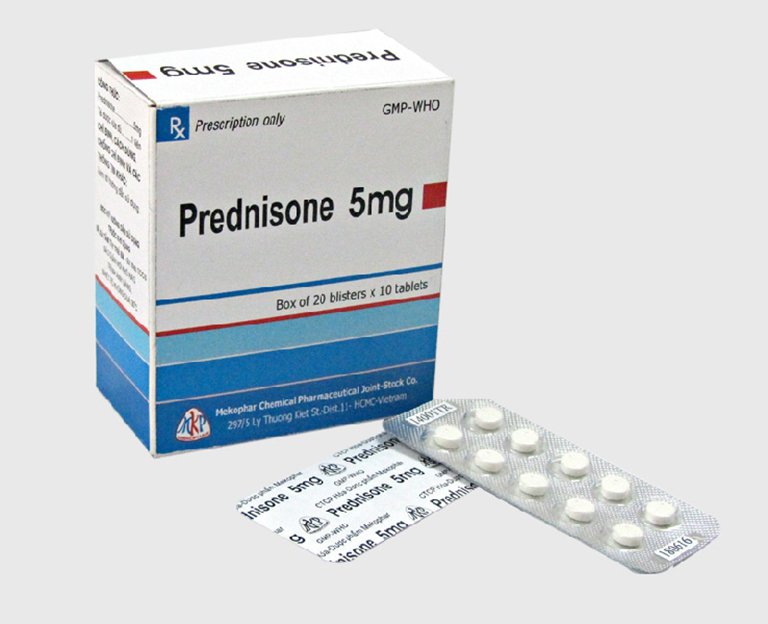 If long-term use of the drug is mandatory, then it is necessary to stop breastfeeding.
If long-term use of the drug is mandatory, then it is necessary to stop breastfeeding.
Pediatric use. Infants, children and adolescents undergoing long-term treatment should be under close medical supervision because of the risk of growth and developmental disorders. In children during the period of growth, the drug should be used only according to absolute indications.
Elderly patients. Treatment of elderly patients, especially in the long term, should be planned taking into account the more serious consequences of common side effects of corticosteroids, in particular osteoporosis, diabetes, hypertension, hypokalemia, susceptibility to infections, thinning of the skin. It is necessary to monitor the patient’s condition.
Features of the effect of the drug on the ability to drive a vehicle or potentially dangerous mechanisms. Some undesirable actions (convulsions, dizziness and headaches, double vision or blurred vision, mental disorders) can affect the ability to drive a car, maintain machines and general psychophysical condition.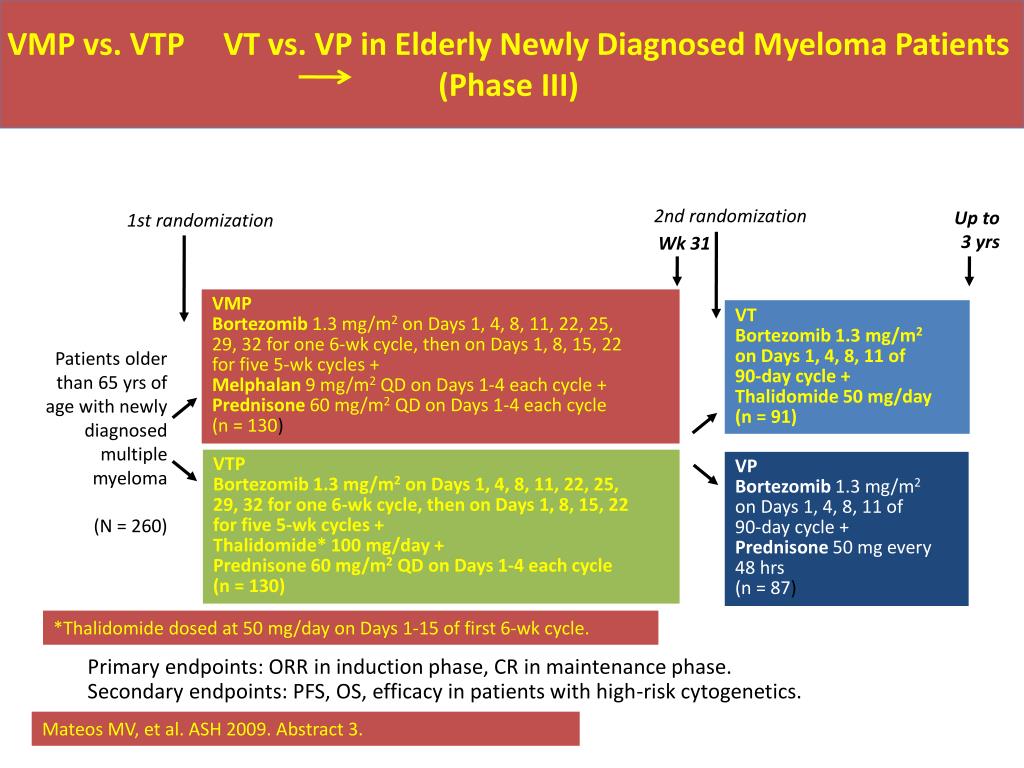


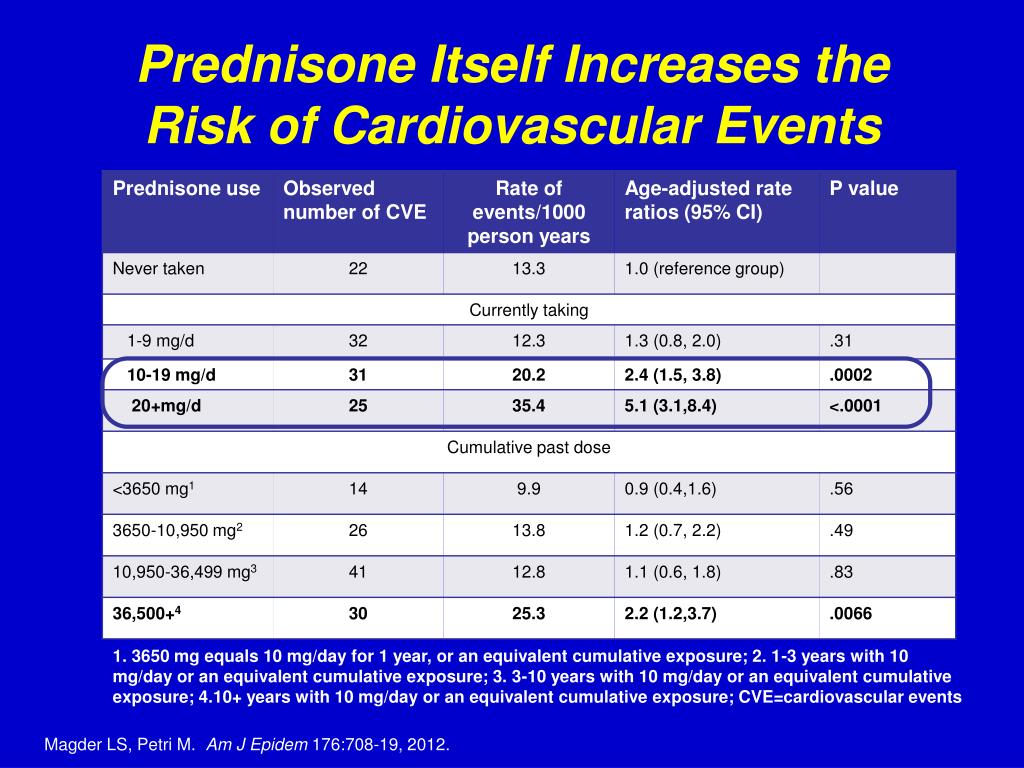
 5 mg/kg/day for 2-5 days followed by a 7-10 day taper and then discontinued.
5 mg/kg/day for 2-5 days followed by a 7-10 day taper and then discontinued.

 Rayos (Prednisone) Delayed-release Tablets. Available from: Rayosrx.com
Rayos (Prednisone) Delayed-release Tablets. Available from: Rayosrx.com